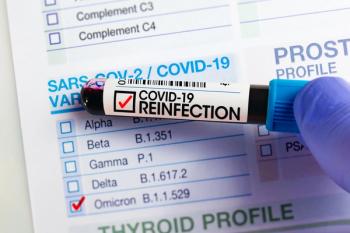
Is Florida's Oxycodone Problem Under Control?
Promising statistics from the DEA suggest that efforts to restrict access to the painkiller are making headway.
Promising statistics from the DEA suggest that efforts to restrict access to the painkiller are making headway.
According to new figures from the Drug Enforcement Administration (DEA), physicians’ oxycodone purchases dropped by 97% in Florida from 2010 to 2011. A large part of the decrease is attributed to a state law that took effect mid-year banning physicians and clinics from dispensing oxycodone. According to the DEA’s public information officer for Florida, David Melenkevitz, “This is a significant achievement in a state where seven people die every day from prescription opioid overdose.”
Under the new state law, patients must visit a pain clinic and then fill their prescription at a pharmacy to obtain oxycodone. There’s good news on that front, too. According to the DEA’s statistics, oxycodone purchases in Florida’s pharmacies have dropped 14%. In a public statement, the DEA said, “While logically it would seem that one could expect a significant increase in oxycodone purchases by pharmacies to fulfill the demand, recent ARCOS (Automation of Reports and Consolidated Orders System) data indicates this is not the case.”
The state has also launched a successful effort to eliminate the “pill mills” in South Florida. According to federal prosecutors, approximately 85 people—13 of whom were doctors—were arrested in the last year on “pill mill” related charges.
Oxycodone has a troublesome history in Florida. In 2010, the drug was the number 1 cause of drug overdoses in that state, playing a role in more than 1500 deaths. Also in 2010, 90 of the top 100 oxycodone-purchasing doctors in the United States resided in Florida. That number showed a staggering decrease in 2011, dropping to 13 of the top 100 prescribers. The DEA uses ARCOS data to maintain this list, but the names of the specific physicians, clinics, or pharmacies associated with high oxycodone use are not public record. Melenkevitz clarifies, “Just because a physician appears on the list doesn’t imply criminality.”
It will be interesting to see if Florida’s drop in oxycodone purchases translates to a drop in drug abuse and diversion within the state. The Centers for Disease Prevention and Control (CDC) issued a
In the report, the CDC also compared different jurisdictions’ opioid analgesic overdose mortality, rates of nonmedical opioid use, and medication sales. Among the states, they identified several trends:
- Between 1998 and 2008, the highest sales rates overall are clustered in the Southeast (including Florida) and the Northwest
- Death rates for overdoses involving opioid analgesics varied from 1.8 to 15.6 per 100,000 individuals in 2006
- Nebraska had the lowest opioid-related death rate (5.5 per 100,000); New Mexico had had the highest (27 per 100,000)
- Rural and impoverished counties tend to have higher prescription drug overdose death rates
Pharmacists can stay informed about opioid painkiller abuse and other important topics in Pharmacy Times’ monthly Drug Diversion and Abuse column, written by Commander John Burke, a 40-year veteran of law enforcement and the current president of the National Association of Drug Diversion Investigators. Recent articles include:
- Showing Identification at the Pharmacy Counter
- Drug Diversion—Is It Simple Math?
- America’s Pharmacists: Doing the Right Thing
Newsletter
Stay informed on drug updates, treatment guidelines, and pharmacy practice trends—subscribe to Pharmacy Times for weekly clinical insights.


















































































































































































































